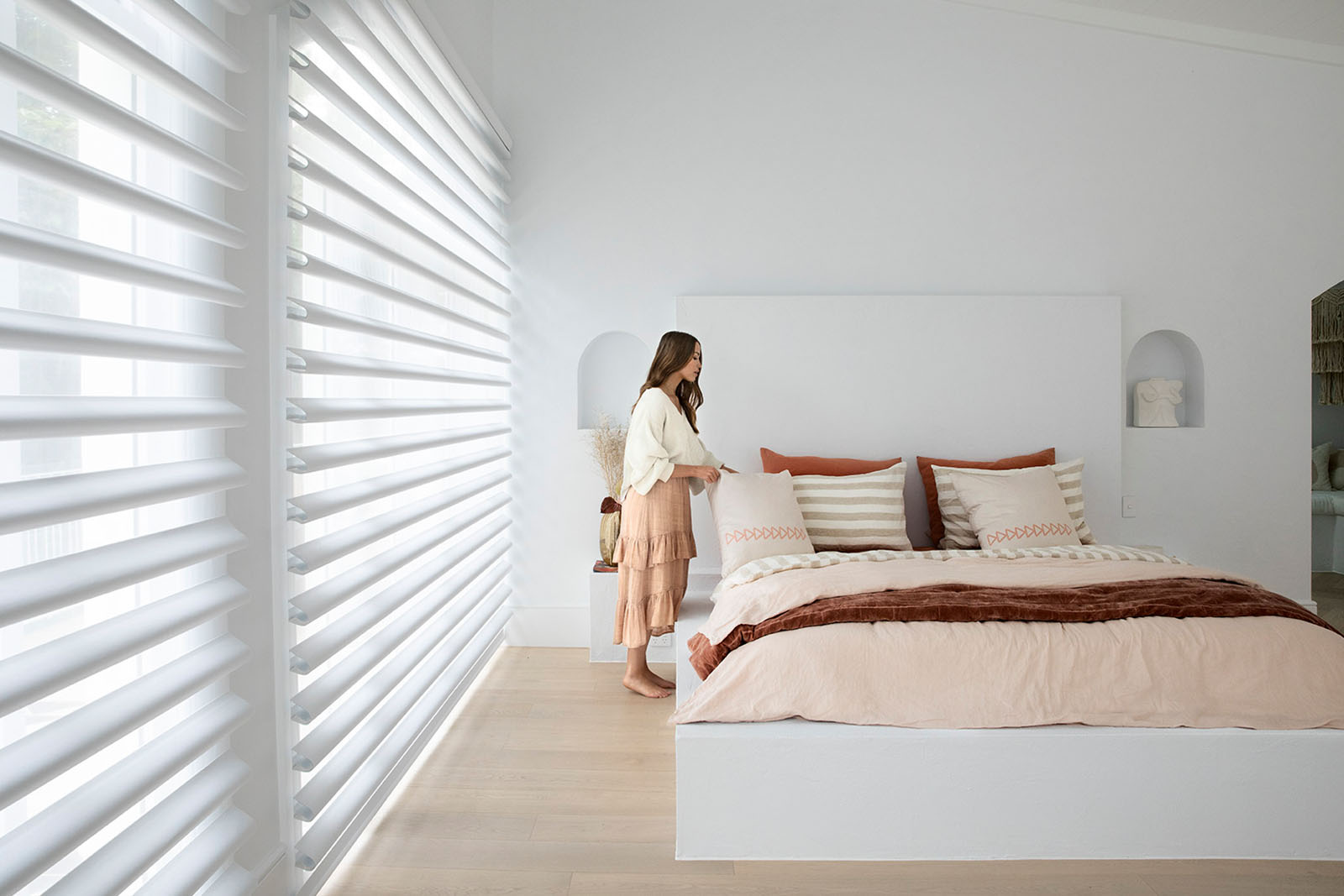570 High Street Penrith, NSW, 2750
When it comes to designing or renovating an interior space of any kind, there's no question that it's extremely important to prioritise the flow of natural light.
According to a recent Workplace Wellness Study by Future Workplace, the two most important factors in determining employee wellbeing are natural light and good air quality.
Enabling the flow of air and light is equally important in the home, and can contribute to our wellbeing in several ways:
Most of us would have noticed, at some stage, how a dark, musty room can feel cold and oppressive, whereas a bright room that's filled with light can feel warm and inviting. However, the effects of natural light go beyond merely evoking a feeling.
In fact, there's plenty of scientific evidence to suggest that natural light can help improve our moods, lower fatigue and even reduce eyestrain. According to this paper, the body uses light as a nutrient for metabolic processes, in a similar way to how it uses food or water.
"Natural light stimulates essential biological functions in the brain and is divided into colours that are vital to our health. On a cloudy day or under poor lighting conditions, the inability to perceive the colours from light can affect our mood and energy level," it says.
According to the Sleep Foundation, natural light also plays a central role in regulating circadian rhythm, the body's internal clock that signals when to be alert and when to rest. It also affects the production of melatonin, an essential sleep-promoting hormone.
"Excess or poorly timed artificial light exposure can cause a person's circadian rhythm to be misaligned with the day-night schedule," it says.
Dark, damp areas of the home - devoid of natural light and airflow - are also more susceptible to developing mould and mildew, which can lead to a range of health problems in humans. Enabling natural light to fill living areas, and encouraging air to flow throughout, can go a long way towards keeping these issues at bay.
There's also considerable evidence to suggest that sunlight can also boost our serotonin levels, which makes us feel happier and more content. Serotonin can help stabilise our moods, but it can also help with bone, eye, blood and cardiovascular health.
Enabling natural light to flow through your home can also keep us warm in the colder months of the year, which is beneficial for our overall health and wellbeing. That said, it's also important to find ways to ensure that natural sunlight isn't too harsh or damaging to your home's interiors - especially if you live in a warmer climate.
The Luxaflex® Duette® Architella® Shades, are an ideal option, as they have an innovative 'top-down-bottom-up' feature which means you can adjust your shades according to where light flows into a space during the day.
Similarly, the Luxaflex® Pirouette® Shadings consist of soft, horizontal fabric vanes which are attached to a single, sheer backing. You can easily adjust these vanes to determine how much light flows through, as well as the extent to which you can see through the sheer, rear fabric.
Luxaflex® Luminette® Privacy Sheers are also a great option when it comes to controlling the amount of light that enters a room. With a softly curved vertical design, and integrated fabric vanes for a striking look, these coverings are ideal for expansive windows or sliding doors, as they accommodate both light control and privacy, and let a soft and flattering light to filter through to the room.
Luxaflex® Silhouette® Shades with Signature S-Vanes also offer a great combination of elegance with functional design, and can transform harsh sunlight light into a gentle, diffused glow.
Simone Matthews, Interior Designer at Soul Home, always prioritises the flow of light in her designs. For Simone, it's about striking a balance between letting light in, and ensuring it's not too overwhelming or damaging to the home's interiors.
Referring to one of her latest home designs, The Pause at Gerringong in NSW, Simone says, "we really wanted to champion light without using too many lamps or overhead lights, so unfiltered natural light was a goal for us."
For this reason, they used the S-Wave Curtains from the new Luxaflex® Curtain Collection.
"The Luxaflex® Ccurtains create a light show; moving against the concrete floors, combined with the morning and afternoon light, it really creates a magnetic energy," she says.
Another great way of getting soft, filtered light into a room is to use the Luxaflex® Lumishade®. A contemporary take on a classic window covering, this option combines the versatility of a vertical blind with the elegant appeal of a soft window furnishing.
Well-known Interior Designer and TV personality, Neale Whitaker, also focuses a great deal on natural light in his designs.
Recently, Neale was invited to style a luxury property in Freshwater, on Sydney's beautiful northern beaches. Situated right on the oceanfront, this home had an abundance of natural light, and so Neale chose the Luxaflex® Duettev Architella® Shades for the living/dining and kitchen areas.
"I chose a translucent fabric to screen out the harsh light and give a soft glow to the room, and a pale grey fabric to work with the natural colour palette used throughout the living area," he says.
He also opted for Luxaflex® Duette® Architella® Shades in the master bedroom - though here, selected a block-out fabric, as the priorities in this room were privacy and the elimination of light during the evening.
If you're interested in learning more, or about maximising the use of natural light in your home, book a complimentary appointment with a Luxaflex consultant at a showroom near you.
